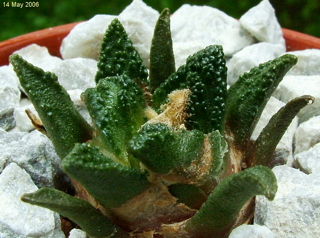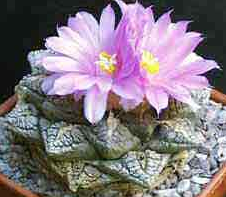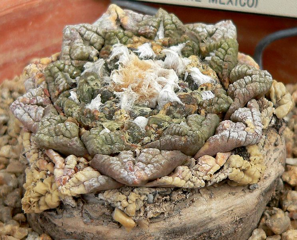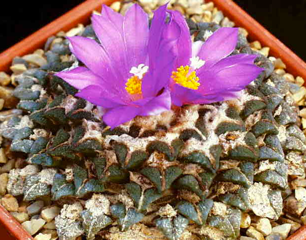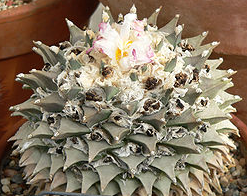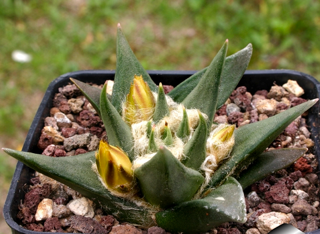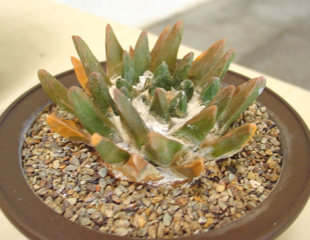Submitted by: Jim Tanner
Ariocarpus is one of the treasures of the world of Cacti. This genus, from Central to Northern Mexico and Southern Texas has some of the most spectacular species of the entire family. Some succulent growers, who otherwise avoid cacti, make this genus their sole exception. There are collectors who collect nothing but Ariocarpus, and have hundreds of plants in their collections. Rare specimens can change hands for hundreds of dollars. Rare cultivars with unusual tubercles can be sold for even more, particularly in Japan. There is no denying that this single genus has generated a world wide cult of devotees.
With all of this, you might expect Ariocarpus to be difficult to come by, and difficult to grow. Nothing could be further from the truth. They are no more difficult to grow than many other central Mexican genera. All of the species and all of the varieties are readily available, and nearly all are affordable. This genera is well within the range of even beginning novice growers. Field collected specimens are occasionally available, and these are much more expensive, and much harder to grow. Recently collected specimens are now almost always illegally obtained.
With all of the fuss we make over this genus, it is important to remember that the plants have had important ethno-botanical uses. The tubercles contain a sticky mucilage, which was often used as glue to mend broken pots. Ariocarpus kotschoubeyanus was boiled and used as a cure for rheumatism, and several species were used as ‘false peyote’ in religious ceremonies.
Cultivation is not difficult, when the home environment of these plants is considered. They grow in mineral soils, with very little organic matter. They all have large tuberous roots. They grow in areas that are very hot in the summer, and that have summer rainfall. If they are protected from excess organic matter, particularly peat, and watered heavily only in hot weather, (but lightly throughout the summer growing season) good growth will result. They need protection from winter rains.
There are six species, several varieties, and a near infinite set of cultivars.
Tom Glavich
LATIN LOOKUP – Loquerisne Latine (Do you speak Latin)?
The meanings of latin plant names on this page – from http://davesgarden.com/guides/botanary/
- Ariocarpus [ar-ree-oh-KAR-pus]
From the Greek aria (sorb) and karpos (fruit), referring to the similarity to the fruit of the Ario genus. - fissuratus [fis-zhur-RAY-tus]
From the Latin fissura, to split or crack. - kotschoubeyanus [ ]
Named for Prince Kotschoubey, Russian prince and patron of horticulture. - retusus [re-TOO-sus]
Rounded and notched tip. - scaphirostris [skay-fee-ROS-tris]
From the Greek skaphe (boat) and the Latin rostrum (beak); in reference to the shape of the tubercle tips. - trigonus [try-GOH-nus]
Three-cornered, triangular.
